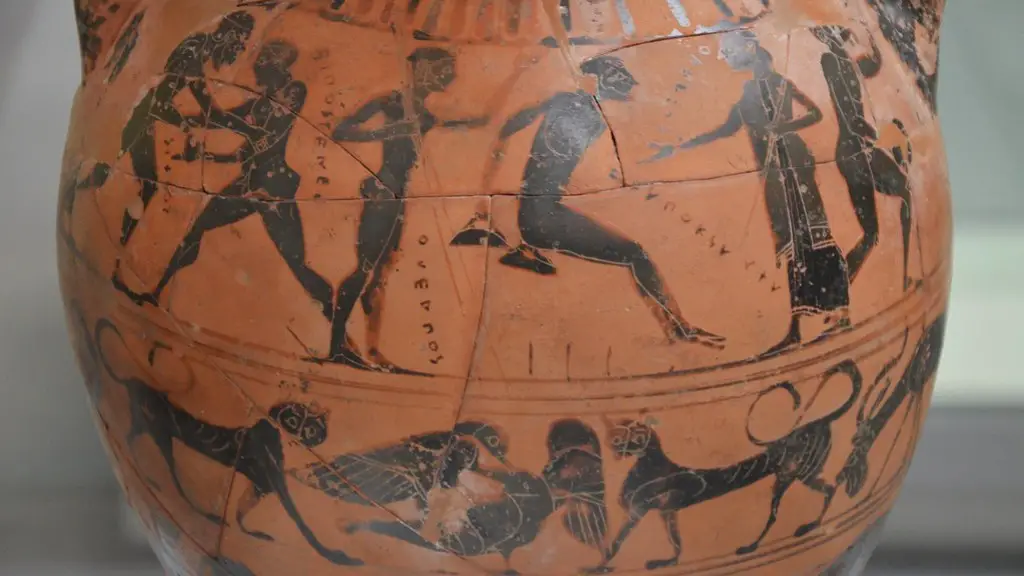Marriage was a very important institution in ancient Rome. Not only was it a way to form alliances between families, but it was also a way of cementing social status. There were several different ways that marriages could be arranged in ancient Rome. The most common way was for the parents of the bride and groom to arrange the marriage. This was done either through negotiations between the two families or by using a go-between. Sometimes, the bride and groom would be consulted about the decision, but this was not always the case. Another way that marriages could be arranged was by abduction. In this case, the groom or his family would simply take the bride away from her family against their will. This was often seen as a way of ensuring that the marriage would go ahead, as the bride’s family would be unlikely to refuse a marriage that had already been consummated. Finally, marriages could also be arranged through the process ofManus. In this case, the bride’s father would give her away to the groom in exchange for a dowry. This was the most formal way of arranging a marriage and was often seen as a way of ensuring that the bride’s family would not be taken advantage of.
Marriages in ancient Rome were arranged by the parents of the prospective bride and groom. The father would negotiate with the father of the bride and agree on a dowry. Once the dowry was agreed upon, the bride’s father would give his daughter away to the groom during a wedding ceremony.
Why was marriage arranged in Ancient Rome?
It is interesting to note that marriage in Ancient Rome was more of an arrangement between families, rather than a ceremony marking the eternal union of two lovers. This is likely due to the fact that wealth and status were more important than love or passion when it came to choosing a bride or groom.
Marriage in ancient Rome was a strictly monogamous institution. Roman citizens could only have one spouse at a time. This practice distinguished the Greeks and Romans from other ancient civilizations, in which elite males typically had multiple wives.
What was the average age for a Roman girl to marry
It is clear that the Roman society did not approve of women becoming sexually active at a young age. The ancient doctor Soranus warned against the dangers of this, and most Roman women appear to have married later in life, from around 15 to 20 years old. This shows that the Roman culture valued virginity and saw young women as too inexperienced to be engaging in sexual activity.
It is interesting to note that Roman men were praised on their tombstones for treating their wives kindly, implying that such kindness was unusual and perhaps even unnecessary. In a manus marriage, for example, a husband could beat his wife with impunity and was expected to do so if she “misbehaved.” This highlights the different expectations and standards for men and women in Roman society.
How did Roman men get their wives?
The betrothal is a formal ceremony between the prospective bride and groom and their respective families. Gifts are exchanged and the dowry agreed upon. A written agreement is signed and the deal sealed with a kiss.
Prior to 445 BC, intermarriage (connubium) between patricians and plebeians was forbidden. After that, the children of such marriages took the social rank of the father, be it patrician or plebeian, regardless of the mother’s status.
How many children did the average Roman woman have?
Even though infant mortality was high, Rome was still a very active society with a lot of children and teenagers. On average, women would have between four and six children, so siblings were very common. And because remarriage was such a regular occurrence, it was not uncommon to see multiple siblings from different families.
The age of seven was picked out by lawyers as the minimum age for consent to marriage. This means that all parties needed to be old enough to understand what was being done and the nature of consent to marriage.
Were Romans monogamous
Augustus’ rules on marriage were designed to encourage marital fidelity and discourage casual sex. In particular, the lex Julia and the lex Papia Poppaea made it illegal for a man to have more than one wife, and imposed stricter penalties for adultery. While these laws may have helped to reduce infidelity and promiscuity, they likely had little impact on the overall practice of polygamy in Rome.
In many cultures around the world, girls are considered children until they are married off to a husband. This can happen as young as twelve years old in some cases. Once a girl is married, she is then considered an adult and is responsible for the running of her household and the care of her husband and children. In some cultures, boys are not considered adults until they are fourteen years old. This is because they need to be able to physically protect and provide for their families. In most cases, young girls are engaged to be married at twelve years old and are married by thirteen. This is often done to secure a good match for the girl and to ensure that she is financially taken care of.
Which Roman emperor married his mother?
Her name was Agrippina the Younger, and she was Nero’s maternal aunt. Nero was only 17 years old when she married Claudius, making him more than twice her age.
Divorce was fairly common in Ancient Rome, which in a way gave women control over who they wanted to be with. Both the male and female parties of the relationship could initiate divorce, so women weren’t entirely reliant on men to make that decision for them. This allowed for more freedom and choice when it came to picking a partner, which was a great step forward for equality.
What did Romans do with female slaves
The ancient Romans had a very strict social hierarchy and this was reflected in their treatment of slaves. Women slaves were typically used for domestic tasks such as hairdressing, dressmaking, cooking, and cleaning. Other slaves were sent to work in small workshops, where they would make goods such as leather goods, silverware, or pottery. However, the slaves who had the hardest lives were those who were forced to work in the mines.
Women in ancient Rome were not seen as equal to men before the law. They typically received only a basic education, if any at all, and were subject to the authority of a man. Traditionally, this was their father before marriage. not much is known about women’s lives in ancient Rome, but it is clear that they were not given the same opportunities as men.
Did Roman men kiss each other?
The ancient Romans probably had very little regard for personal space since one way that social equals, usually those we would consider aristocrats, would greet each other on a daily basis would be with a kiss. Family members would kiss when meeting, brothers, friends, and even boxers and wrestlers would touch lips.
This was the case because Roman law stated that fathers had complete control over their daughters’ lives and could essentially do whatever they wanted with them, including marry them off to whomever they saw fit. This often resulted in girls being married off at very young ages, sometimes even before they hit puberty. While 14 was the marriageable age for boys, girls could be married off as young as 12. This was done in order to ensure that fathers could marry their daughters off before any other suitors had a chance to swoop in and take them away. While it was not uncommon for the groom to be significantly older than his bride, it was also not uncommon for an older man, whose wife had died or been divorced, to take a significantly younger bride. This was done in order to keep the older man’s property and wealth within the family.
Did Roman men love their wives
Although the Roman patriarchy controlled how marriage was defined and observed, and men were expected to have extramarital dalliances, there was still room for honest, loving relationships between husbands and wives based on mutual trust and affection. Although Roman marriages were generally based on power dynamics and not romantic love, there are still some examples of loving, committed relationships between husbands and wives. These relationships were based on mutual trust and respect, and show that despite the patriarchal control of marriage, it was still possible for husbands and wives to have a loving relationship.
This is referring to the age at which boys in certain cultures would undergo a rite of passage into manhood. This would often involve some kind of physical challenge orordeal, after which the boy would be considered a man.
Warp Up
Marriages in ancient Rome were arranged through a process called confarreatio. The bride and groom would each take a piece of bread from a shared loaf, and then exchange vows and share a cup of wine. After this, they would be considered married.
In ancient Rome, marriages were arranged by the fathers of the bride and groom. The father of the groom would approach the father of the bride and negotiate a dowry. Once the dowry was agreed upon, the two fathers would sign a contract called a betrothal. The betrothal was a legally binding agreement that could only be broken by death or divorce. After the betrothal was signed, the groom would give the bride a ring to wear as a symbol of their betrothal.





